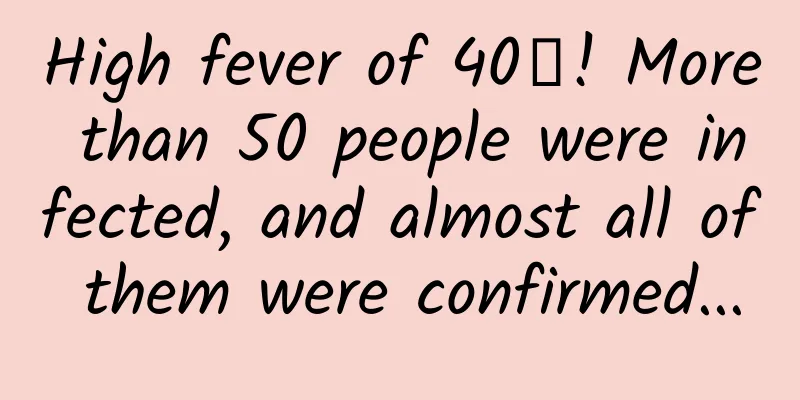The dust in the house can never be swept clean, what’s going on?

|
When you vacuum, sweep the floor, and wipe the furniture, you may wonder why there is dust every day? Even if the doors and windows are closed, a thin layer of dust will still fall after a few days. What are they? What impact does it have on our health? 01 Don't throw dust at home Send it to scientists for testing If you don't know anything about dust, don't feel bad. Scientists don't have a complete understanding of indoor air and particulate matter, or the health risks they pose. But some scientists are systematically studying them. Copyright images in the gallery. Reprinting and using them may lead to copyright disputes. In order to better quantify the impact of indoor environment on health, scientists use the "exposome" research method. Simply put, it takes into account all environmental exposures experienced by a person throughout his life. Environmental exposure includes, for example, secondhand smoke inhaled by a person in infancy, lead exposure in childhood, and suspended particulate matter that a person will be exposed to when living near main roads or industrial facilities as a child. Dust is an important part of exposure. "360 dust analysis" is a research project on indoor exposure. It was jointly conducted by geochemist Gabriel Filippelli, environmental scientist Mark Taylor and other international scholars, and ordinary families were called to participate in the research. These family members can become so-called "citizen-scientists" and voluntarily participate in scientific experiments. After using the vacuum cleaner, they can put the dust in the filter bag into a sealable bag and send it to the laboratory for analysis. These wide sources of dust help to understand the impact of indoor particulate matter in the home environment on human health. 02 What exactly is dust? About one-third of the dust in a home is generated indoors. However, due to differences in the structure and age of the houses of different families, as well as the cleaning and smoking habits of the residents, there is no standard "recipe" for dust in the home. Copyright images in the gallery. Reprinting and using them may lead to copyright disputes. Generally speaking, the most common debris is the dandruff produced by the shedding of human skin cells. If you have pets at home, their dandruff will also fall off, and the dust will contain pet skin cells (called dandruff) and dust mites that feed on the skin. Traces of indoor activities can also be seen in dust, such as food residues left over from cooking, fiber particles from carpets, sheets, and clothes, and particulate matter left by smokers. Indoor dust also contains the remains of some small creatures - those insects that crawled into the house at some unknown time and left their half-rotten bodies indoors. Well, pretty gross stuff so far. But that's not all. Man-made chemicals, flame retardants and surface protectants used to treat clothing and furniture were also found in the dust mixture. Another two-thirds of indoor dust comes from outside. Dirt and dust collect from shoes and pets’ feet and fur. Dust also blows in from open windows, doors, and vents. Dust can come in a variety of sizes and compositions, from silt and sand to irritating pollen and very fine soil particles. 03 Chemicals in dust May have health effects Some of this dust could be a health threat. Just as CFCs in refrigerants and other products contribute to the degradation of ozone in the Earth's protective stratosphere, and bisphenol A, a plasticizer used in bottles and other consumer packaging, enters the human body, scientists worry that as people improve their lives with all kinds of synthetic chemicals, they may inadvertently introduce health hazards into the dust flying around them. Copyright images in the gallery. Reprinting and using them may lead to copyright disputes. Researchers have found chemical molecules from flame retardants and surface protectants in people's blood and tissues, and there is evidence that even newborns are exposed to these particles in the womb. Most of these molecules enter the bloodstream through inhalation or ingestion of indoor dust. Currently, there is a series of studies measuring the potential toxicity of these chemicals in the human system. At the same time, scientists are also developing close-fitting wearable devices, such as silicone bracelets, to determine the relationship between these dust sources and how much dust will eventually enter the human body. Antibiotic resistance is also on the rise in bacteria in indoor dust. Studies have linked several indoor disinfecting products to antimicrobial resistance. At least one study found that elevated levels of triclosan, a common antimicrobial in hand sanitizers, were associated with high levels of antibiotic resistance genes in dust, which may have come from bacteria in the dust. When people wash their hands or clean, they kill most bacteria and other microorganisms, but those that have mutated into resistance genes are left behind, allowing them to continue to grow and multiply in large numbers. The most widely known health concern from outdoor dust is lead. Lead is a particularly serious problem in cities and places near mining or other industrial sources. This potent neurotoxin has accumulated to sometimes extremely high levels in soil and dust over a century of industrial emissions, the burning of leaded gasoline, and the use of lead-based paints that degrade. Lead-contaminated soils and the dust they produce have been closely linked to lead poisoning in children. Because children's nerves are still developing rapidly, the neurotoxic effects of lead exposure can be lifelong. Copyright images in the gallery. Reprinting and using them may lead to copyright disputes. Scientists studying lead poisoning prevention have traditionally focused on things that are relatively easy to identify, like peeling paint and lead water pipes. Now, lead exposures from soil and dust are also coming into focus. Studies have found correlations between lead levels in the air and blood lead levels in children. Several lab groups are now looking closely at exposures in outdoor environments, and are also studying how lead seeps into homes and becomes part of indoor exposures. 04 What can we do? The studies mentioned above have only collected limited evidence and established correlations. More evidence is needed to reveal the specific effects of dust particles on health. Therefore, we don't need to panic too much and start mopping the floor three times a day. However, there are some simple principles that can be adopted as appropriate. For us, a pet-free and fiber-free indoor environment can reduce the amount of indoor dust and potential toxicity, which may be better for people with allergies or fragile respiratory tracts. If you have a lot of fabrics at home, or have cats and dogs, you can also pay more attention to the cleaning conditions. Copyright images in the gallery. Reprinting and using them may lead to copyright disputes. Taking off outdoor clothing and jackets when you get home and not wearing shoes at home is also a way to reduce the amount of outdoor pollutants brought indoors. The soles of shoes are gross: 96% of shoes have fecal bacteria, including antimicrobial-resistant Clostridium difficile, and more than 90% of these bacteria are transferred to the floor. In addition, residue from asphalt roads contains carcinogenic toxins, and the soles of shoes that walk on the lawn may carry endocrine-disrupting lawn chemicals, so it is recommended that you do not wear shoes worn outdoors into the house. Of course, we should also try to avoid over-disinfecting the home to avoid breeding drug-resistant superbugs. Using an air purifier to filter the indoor air may be better than mopping the floor frequently with detergent. Source: Guokr The cover image and the images in this article are from the copyright library Reprinting may lead to copyright disputes |
<<: National Low Carbon Day: Let our low carbon habits make the sky blue again
>>: Antarctic sea ice reaches record low for June, 17% below average
Recommend
"China's Sky Eye", new news →
July 26, 2023 (Beijing time) National Key R&D...
If the Netherlands wins the World Cup: Free space tour for everyone
The Dutch national team is now one of the top four...
Develop a bamboo block game based on SpriteKit+Swift
1. Introduction SpriteKit is Apple's game dev...
Cheng Xianfeng: Next-generation software performance measurement system
On April 10-11, 2015, the WOT2015 Internet Operat...
Why did the world's only confirmed 8th-century Persian brocade appear in Qinghai, China?
Even in the Qinghai-Tibet Plateau, the "thir...
The swordplay 2000 years ago, starting from the "golden marriage" in the history of iron smelting?
Shi Jin in "Water Margin" asked Wang Ji...
Wuhan SEO Training: How long does a Baidu update usually last?
For now, it can be said that the market is develo...
What exactly is a magnetic storm, and why can it destroy Musk’s 40 satellites at once?
According to reports by CNN and Reuters on Februa...
The magic weapon for subway advertisements to flood the screen!
As the leader in outdoor advertising, subway adve...
A Canadian company has developed a "quantum invisible" material. Harry Potter's "invisibility cloak" may not be far away
The Harry Potter series of novels and movies can ...
#Developer Benefits# Baidu MTC launches Galaxy S7 new phone App compatibility test
Baidu Mobile Cloud Testing Center (MTC) has been ...
Comment weight restored? Apple has caused trouble 4 times in less than a month. Developers: exhausted!
Apple's Black Thursday Thursday is actually a...
Musk admits that the revolutionary new battery is a PowerPoint presentation, Tesla's stock price plummets 7%
At 4:30 a.m. Beijing time on September 23, Tesla ...
Competitive product analysis report: Bilibili VS A-station & TikTok
This article is a competitive product analysis re...









